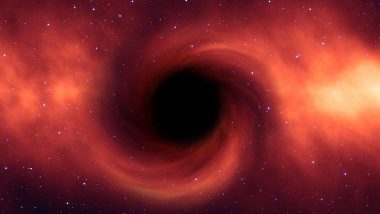Black Hole—the gravitational force which has long been a mystery is finding it's way decoding many things—one discovery at a time. In March 2021, astronomers obtained the first image of Black Hole’s magnetic fields, and another video that went viral last year showed the ‘Tidal Disruption Event,’ where a black hole devoured a star, almost the size of the Sun. While there are many theories yet to answer, scientists are surely progressing in their cosmic study. It has recently come to the light, that one of the smallest known black holes in the Milky Way galaxy has been discovered in the solar system. Scientists nicknamed it ‘the unicorn.’ According to reports, the black hole is roughly three times the mass of our sun. In this article, we will know more about the unicorn black hole.
The cosmos far beyond our planet is filled with things so wonderful, yet difficult to believe they exist. A black hole is the weirdest of them all. A black hole is a region of spacetime where gravity is so strong that nothing—no particles or even electromagnetic radiation such as light can escape from it. They form when very massive stars collapse at the end of their life cycle. There is still a lot to know about black holes, but researchers have found many interesting discoveries over the year. The latest one is the unicorn black hole.
Ohio State University researchers spotted this one, which is about 1,500 light-years away from the Earth. While it may be the closes one to us, it is still far away. It has been further found out that a luminous star, called a red giant orbits with the black hole in a binary star system named V723 Mon. Even though it is roughly three times the mass of our sun, the size is considered tiny for a black hole. It is noteworthy that black holes aren’t visible, and researchers were able to locate this one after analysing data documenting certain changes in the companion star.
Why unicorn? The discovery was reportedly dubbed ‘the Unicorn’ because it is rare and located in the Milky Way in the constellation Monoceros, which means ‘unicorn’ in Latin, as per the release from the Ohio State University. “When we looked at the data, this black hole — the Unicorn — just popped out,” Tharindu Jayasinghe, a doctoral student in astronomy at Ohio State University was quoted saying in reports. After noticing something was causing the red giant’s intensity, and appearance to change, Jayasinghe and other researchers noticed something was pulling at the star. The effect is known as tidal distortion. It was these effects that indicated the black hole’s presence.
(The above story first appeared on LatestLY on Apr 28, 2021 03:03 PM IST. For more news and updates on politics, world, sports, entertainment and lifestyle, log on to our website latestly.com).













 Quickly
Quickly


